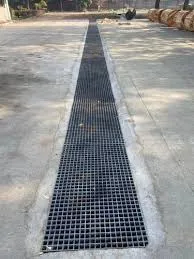
-
 Afrikaans
Afrikaans -
 Albanian
Albanian -
 Amharic
Amharic -
 Arabic
Arabic -
 Armenian
Armenian -
 Azerbaijani
Azerbaijani -
 Basque
Basque -
 Belarusian
Belarusian -
 Bengali
Bengali -
 Bosnian
Bosnian -
 Bulgarian
Bulgarian -
 Catalan
Catalan -
 Cebuano
Cebuano -
 China
China -
 China (Taiwan)
China (Taiwan) -
 Corsican
Corsican -
 Croatian
Croatian -
 Czech
Czech -
 Danish
Danish -
 Dutch
Dutch -
 English
English -
 Esperanto
Esperanto -
 Estonian
Estonian -
 Finnish
Finnish -
 French
French -
 Frisian
Frisian -
 Galician
Galician -
 Georgian
Georgian -
 German
German -
 Greek
Greek -
 Gujarati
Gujarati -
 Haitian Creole
Haitian Creole -
 hausa
hausa -
 hawaiian
hawaiian -
 Hebrew
Hebrew -
 Hindi
Hindi -
 Miao
Miao -
 Hungarian
Hungarian -
 Icelandic
Icelandic -
 igbo
igbo -
 Indonesian
Indonesian -
 irish
irish -
 Italian
Italian -
 Japanese
Japanese -
 Javanese
Javanese -
 Kannada
Kannada -
 kazakh
kazakh -
 Khmer
Khmer -
 Rwandese
Rwandese -
 Korean
Korean -
 Kurdish
Kurdish -
 Kyrgyz
Kyrgyz -
 Lao
Lao -
 Latin
Latin -
 Latvian
Latvian -
 Lithuanian
Lithuanian -
 Luxembourgish
Luxembourgish -
 Macedonian
Macedonian -
 Malgashi
Malgashi -
 Malay
Malay -
 Malayalam
Malayalam -
 Maltese
Maltese -
 Maori
Maori -
 Marathi
Marathi -
 Mongolian
Mongolian -
 Myanmar
Myanmar -
 Nepali
Nepali -
 Norwegian
Norwegian -
 Norwegian
Norwegian -
 Occitan
Occitan -
 Pashto
Pashto -
 Persian
Persian -
 Polish
Polish -
 Portuguese
Portuguese -
 Punjabi
Punjabi -
 Romanian
Romanian -
 Russian
Russian -
 Samoan
Samoan -
 Scottish Gaelic
Scottish Gaelic -
 Serbian
Serbian -
 Sesotho
Sesotho -
 Shona
Shona -
 Sindhi
Sindhi -
 Sinhala
Sinhala -
 Slovak
Slovak -
 Slovenian
Slovenian -
 Somali
Somali -
 Spanish
Spanish -
 Sundanese
Sundanese -
 Swahili
Swahili -
 Swedish
Swedish -
 Tagalog
Tagalog -
 Tajik
Tajik -
 Tamil
Tamil -
 Tatar
Tatar -
 Telugu
Telugu -
 Thai
Thai -
 Turkish
Turkish -
 Turkmen
Turkmen -
 Ukrainian
Ukrainian -
 Urdu
Urdu -
 Uighur
Uighur -
 Uzbek
Uzbek -
 Vietnamese
Vietnamese -
 Welsh
Welsh -
 Bantu
Bantu -
 Yiddish
Yiddish -
 Yoruba
Yoruba -
 Zulu
Zulu
rectangular tank made of fiberglass material
A Detailed Overview of Rectangular Tanks Made from Fiberglass Material
Rectangular tanks made from fiberglass are gaining popularity across various industries due to their unique combination of lightweight durability, corrosion resistance, and cost-effectiveness
. These tanks are commonly used in agriculture, water treatment, chemical storage, and other sectors where reliable containment solutions are necessary.Fiberglass, or fiber-reinforced plastic (FRP), is a composite material made of a polymer matrix reinforced with glass fibers. The synthesis process involves layering the fibers with resin, creating a sturdy yet flexible material. This property of fiberglass allows manufacturers to mold tanks into various sizes and shapes, with the rectangular design often maximizing space efficiency and ease of installation.
One of the foremost advantages of fiberglass rectangular tanks is their resistance to corrosion. Traditional materials such as steel or aluminum can easily corrode when exposed to moisture, chemicals, or extreme weather conditions. In contrast, fiberglass is inherently resistant to these elements, making it an ideal choice for storing chemicals, wastewater, or potable water. This characteristic significantly reduces maintenance costs and prolongs the lifespan of the tank, offering a substantial return on investment.
Moreover, fiberglass tanks are incredibly lightweight compared to their steel or concrete counterparts. This feature simplifies transportation and installation processes. Large fiberglass tanks can be maneuvered with relative ease, often requiring fewer resources for setup. In scenarios where space is limited or ground reinforcement is necessary, this aspect becomes particularly advantageous.
rectangular tank made of fiberglass material

In terms of insulation, fiberglass excels in minimizing heat loss or gain. This property is crucial in applications requiring temperature regulation, such as storing certain chemicals or maintaining water temperature in aquaculture systems. The insulating capabilities of fiberglass help in achieving energy efficiency, thereby lowering operational costs.
However, it is essential to consider the design of fiberglass tanks carefully. Their rectangular shape can be a practical solution for various applications, but the structural integrity relies on proper engineering and fabrication methods. Engaging with reputable manufacturers ensures that the tanks are designed to withstand both the intended load and environmental factors.
Furthermore, while fiberglass tanks are generally low maintenance, they should be regularly inspected for wear and tear. Accidental impacts, UV exposure, and chemical interactions can gradually degrade the tank’s integrity. Periodic maintenance checks can help identify potential issues early on, preserving the tank's functionality over time.
In conclusion, rectangular tanks made from fiberglass material offer a compelling combination of durability, lightweight construction, and corrosion resistance. These qualities make them a preferred choice for businesses across a range of industries, eager to optimize their storage solutions while minimizing long-term costs. As technology advances, the potential applications of fiberglass tanks continue to expand, paving the way for innovative solutions in containment and storage.









